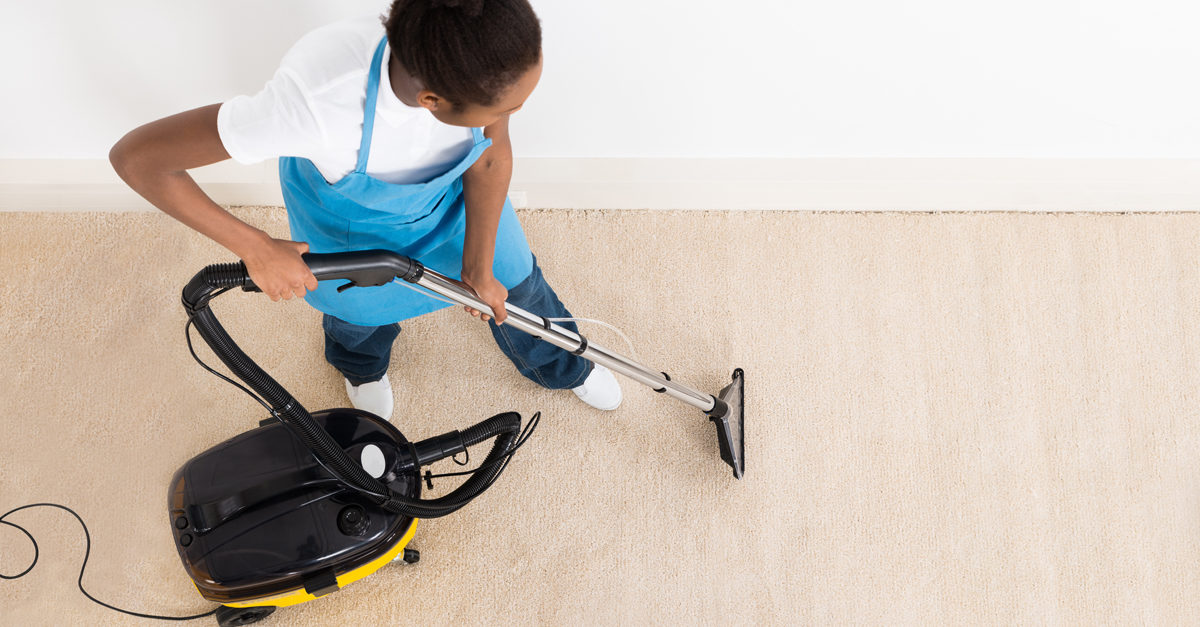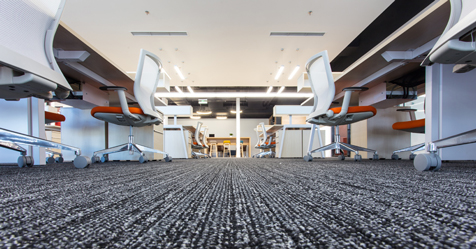Operations or facilities that want to keep carpets spot-free and clean between hot water extraction treatments have several low moisture (VLM) carpet cleaning options available. These interim cleaning options use 99 percent less water than extraction, so people can walk on the carpet a short time after cleaning, according to Stephen Lewis, technical director for Millicare.
Three types of VLM carpet cleaning are common in the commercial market, Lewis states. Building service contractors (BSCs) and facility managers can choose encapsulation, spin bonnet cleaning, or dry extraction.
Encapsulation
This process, sometimes called crystallization, is performed using products that are easy to buy and use, and they are often inexpensive, Lewis says. Cleaners use a detergent formula to break down, surround, or encapsulate the soil in the carpet fiber, then remove the nonsticky powder or crystals from the carpet by vacuuming.
Spin bonnet
This cleaning method is one of the oldest versions of VLM carpet care, Lewis explains. Cleaners place a light prespray detergent on the carpet, and then attach a rotating cotton pad to a slow-speed floor machine and pass it over the carpet. The pad must be changed frequently during cleaning to avoid resoiling the carpet.
Dry extraction
As only a few dry extraction products are available to jansan companies and services, facility managers usually bring in companies that specialize in commercial carpet maintenance, Lewis states. These professionals spread a dry, sponge-like compound on the carpet, work it in using a mechanical scrubber, then remove it by vacuuming. According to Lewis, dry extraction is the lowest moisture option available, and leaves no dirt particles or sticky residues behind.
Interim Cleaning
Scott Warrington, director of technical support for Bridgepoint and the Interlink Supply network and a cleaner/restorer with over 40 years experience, recommends encapsulation as an interim carpet cleaning option.
Equipment options available for applying encapsulation chemistry to a carpet include:
- Counter-rotating brushes
- Single-disc floor machines
- Triple-head rotary machines.
Regardless of equipment used, Warrington says there are a number of benefits to interim encapsulation cleaning.
Quick production times: Encapsulation can clean up to 10,000-square-feet of carpet per hour, depending on the equipment.
Better appearance: After cleaning, there will be little to no wicking, and carpeting often looks better than it would after hot water extraction.
Low-cost equipment: An operation may already have suitable equipment, or can purchase it for under $5,000.
Minimal training required: Distributors can often provide the necessary training.
Short downtimes: Downtime is normally less than one hour.
Other Considerations
Kevin Pearson, president of Pearson Carpet Care, LLC, agrees that VLM methods can be depended on to clean carpet quickly. Since VLM carpet-cleaning options have quick drying times and quiet equipment, they can be completed during regular workday hours, eliminating employee overtime pay. They’re also an ideal option for facilities open around the clock, like airports, hospitals, and casinos.
VLM methods are also a good choice for businesses that are concerned with transportation and fuel costs. Pearson explains that unlike truck-mounted hot water extraction equipment, VLM equipment does not require the truck’s engine to run while cleaning is taking place. Also, transportation costs are lower because VLM equipment can be moved using a fuel-efficient vehicle.
For these and a variety of other reasons, VLM carpet-care options are now more widely used than ever. These different cleaning methods can offer managers and BSCs quick and effective carpet-cleaning results between hot water extraction treatments.



